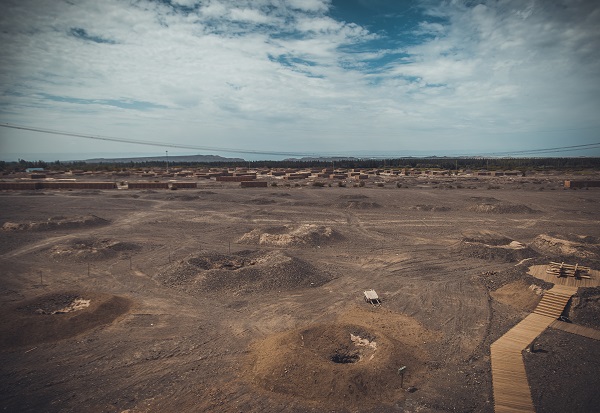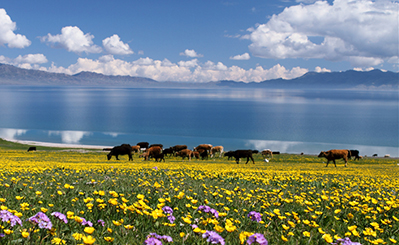Xinjiang's irrigation heritage thrives as lifeline, tourist hotspot

A Karez well consists of a vertical shaft connected to underground channels that surface in the form of ditches and small ponds. [Photo/IC]
Despite the availability of piped water, Hasayn Abla, a farmer in Turpan, Northwest China's Xinjiang Uygur autonomous region, still prefers to draw water from a canal with around 300 years of history for daily usage.
"This is our mother river, the life-giving water," says 54-year-old Hasayn Abla, deeply valuing the Karez well system he has relied on since childhood. Even today, his thriving 13.3-hectare vineyard is still nourished by the waters of the Karez well.
In Turpan, often dubbed China's "land of fire," water is particularly valuable. The average annual precipitation here is only 16 mm, while the evaporation rate measures about 3,000 mm. Despite such dry weather, the place is never a barren land thanks to the irrigation system of Karez, dating back over 2,000 years.
A Karez well consists of a vertical shaft connected to underground channels that surface in the form of ditches and small ponds. The channels are supplied with water from the melted ice and snow in Xinjiang's Tianshan Mountains, while the underground structure of the wells prevents water from evaporating.
This intricate system, once threatened by declining groundwater levels, has been revitalized thanks to rigorous ecological preservation and cultural heritage protection measures.
Today, Turpan boasts 997 Karez canals totaling 3491.74 km in length, with 214 actively transporting water. The Karez system has become a cultural emblem of Turpan, said Gupur Nurdin, secretary-general of the Xinjiang Karez Well Research Institute.
The spectacular, expansive structure of the water channel system and its historical and cultural significance have also drawn an increasing number of visitors.
Turpan has four top-rated scenic spots dedicated to the Karez wells. These destinations offer a comprehensive showcase of the Karez system's structure, distribution, function, culture, and historical evolution.
According to the local cultural and tourism bureau, on August 29 alone, Turpan received approximately 136,000 domestic tourists, with the Karez-themed scenic areas ranking second among popular destinations in terms of visitor numbers.
At one of the scenic sites featuring the source of a Karez well, visitors can take an elevator that goes down about 60 meters to view the underground water flown from the Tianshan Mountains.
Ding Xuemei, a tourist from East China's Jiangsu province, was amazed by her venture into the deep well and marveled at the underground canals buried dozens of meters beneath the earth's surface.
"The fact that this ancient hydraulic engineering marvel, dating back centuries, still functions today is a testament to the incredible ancient wisdom. It fills me with pride and awe," said Ding, who was on her maiden trip to Turpan.
 Attractions
Attractions Dining
Dining Culture
Culture